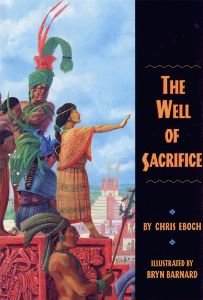I hope these quick writing tips helps you jumpstart your
writing!
This
series on Developing Ideas is excerpted
from You Can Write for Children: How to Write
Great Stories, Articles, and Books for Kids and Teenagers. Get the book
if you want to see all the info at once. The book addresses writing stories for
children, but if you want to write for adults, simply do the exercises ignoring
the "as a child" part.
I've
been talked about “Building a Story
in Four Parts.” We discussed developing the
middle and writing a strong climax. Now on
to…
Happy Endings
The
climax ends with the resolution. You
could say that the resolution finishes the climax, but it comes from the
situation: it’s how the main character finally meets that original challenge.
In
almost all cases the main character should resolve the situation himself. No
cavalry to the rescue! We’ve been rooting for the main character to succeed, so
if someone else steals the climax away from him or her, it robs the story of
tension and feels unfair.
 Here’s
where many beginning children’s writers fail. It’s tempting to have an adult –
a parent, grandparent, or teacher, or even a fairy, ghost, or other
supernatural creature – step in to save the child or tell him what to do. But
kids are inspired by reading about other children who tackle and resolve
problems. It helps them believe they can meet their challenges, too. When
adults take over, it shows kids as powerless and dependent on grownups.
Here’s
where many beginning children’s writers fail. It’s tempting to have an adult –
a parent, grandparent, or teacher, or even a fairy, ghost, or other
supernatural creature – step in to save the child or tell him what to do. But
kids are inspired by reading about other children who tackle and resolve
problems. It helps them believe they can meet their challenges, too. When
adults take over, it shows kids as powerless and dependent on grownups.
Dianne
K. Salerni, author of The Eighth Day
series, says, “To be a writer of children’s books, you need to be a child
inside. You need to write like a child would write (except with the skill of an
adult), and you need to read what your child-self wants to read. ... The best
children’s literature is written by adults who think they are still children,
not by adults who want to ‘help’ children grow up.”
Regardless
of your character’s age, let your main character control the story all the way
to the end (though others may assist).
For example, Sam Bond’s Cousins in Action series is an ensemble
featuring five cousins who have international adventures. The children take
turns at being the hero throughout each book. In Operation Golden Llama, three of the young protagonists find
themselves kidnapped on a mountainside in Peru. Their eleven-year-old cousin
outwits the adults and treks through the jungle to come to their rescue. That
may not be entirely realistic in real life, but it’s great entertainment for
young readers!
Although
your main character should be responsible for the resolution, she doesn’t
necessarily have to succeed. She might, instead, realize that her goals have
changed. The happy ending then comes from her new understanding of her real
needs and wants. Some stories may even have an unhappy ending, where the main
character’s failure acts as a warning to readers. This is more common in
literary novels than in genre fiction.
A Quick Ending Tip:
· How the main
character resolves the situation – whether she succeeds or fails, and what
rewards or punishments she receives – will determine the theme. For example, a
story with the theme “Love conquers all” would have a different resolution than
a story with the theme “Love cannot always survive great hardship.” Learn more
about Theme in You Can Write for Children, Chapter 13.
The
next time you have a great idea but can’t figure out what to do with it, check
if you have all four parts of the story. If not, see if you can develop that
idea into a complete, dramatic story or novel by expanding your idea,
complications, climax, or resolution, as needed. Then readers will be asking
you, “Where did you get that fabulous idea?”
Get More Writing Advice
Chris Eboch is the author of over 60 books for children, including nonfiction and fiction, early reader through teen. Her writing craft books include You Can Write for Children: How to Write Great Stories, Articles, and Books for Kids and Teenagers, and Advanced Plotting.
Her novels for ages nine and up include The Eyes of Pharaoh, a mystery in
ancient Egypt; The Well of Sacrifice, a Mayan
adventure; The Genie’s Gift, a middle eastern
fantasy; and the Haunted series, about kids who travel with a ghost hunter TV
show, which starts with The Ghost on the Stairs. Learn more
at https://chriseboch.com/ or her Amazon page.











